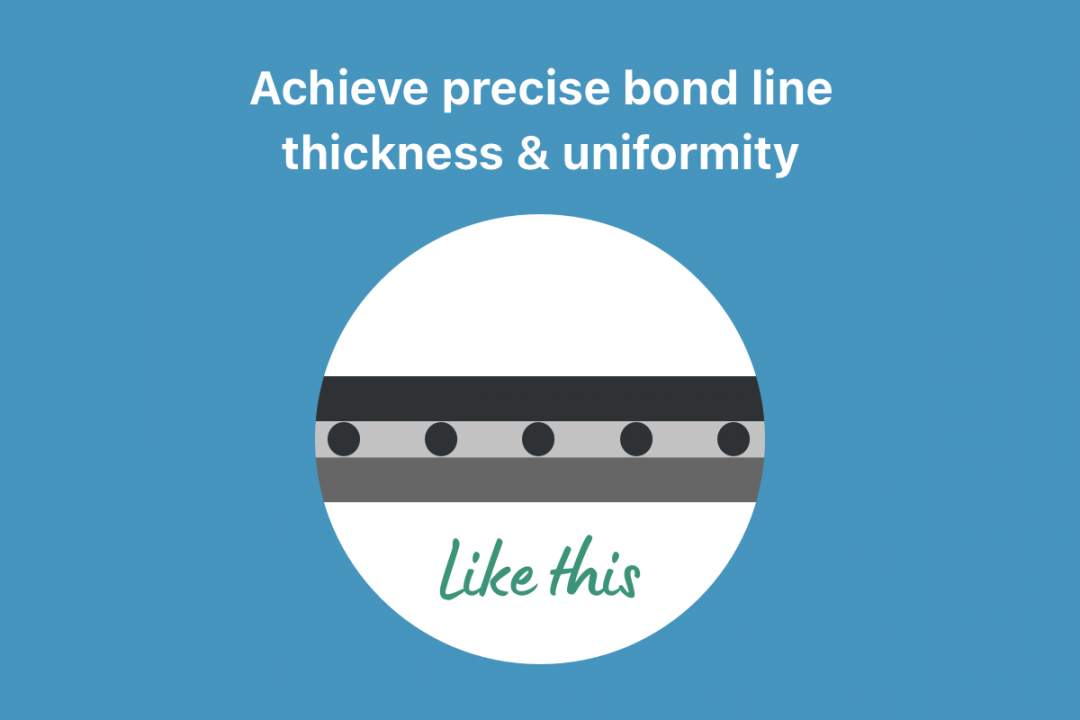Search this site

Inadequate bond line thickness of your adhesive can result in low shear and tensile strength – and potentially part failure.
How your adhesive performs in a product application depends on critical factors, such as the adhesive’s chemical and physical characteristics, the substrates being bonded, proper surface preparation for whetting, and optimized cure time.
Designs often require a specified adhesive bond line thickness to meet and maximize a given application’s performance – especially since inadequate bond line thickness can result in low shear and tensile strength, poor electrical properties, and potentially part failure.
To control bond line thickness, engineers will often use physical limiters, such as process tooling and jigs. If an application’s design can tolerate it, designed in mechanical features, including surface finishing techniques and other part geometries, can enable bond line control.
Sometimes the physical characteristics of the adhesive, such as compressibility and its thixotropic properties, particularly if the parts are small and have little mass, will control bond thickness.
But what if these options aren’t available?
To control bond line thickness, get your adhesive premixed and frozen with glass spacer beads added for even disbursement.
The advantage of spacer beads is the elimination of process variables and risk. Because you’re moving the control of a critical design feature, bond line thickness, from an external process (e.g., tooling and jigs) to an internal process, you now have precise control of bond line uniformity.
Assuming the design can tolerate an inert glass sphere filler, which would result in a small increase of joint stiffness in structural applications and a small increase in resistance in conductive applications, the specified bond line thickness is equal to the distribution of the largest glass beads, assuming the fixture clamp pressure is sufficient to ensure bead contact.
Appli-Tec has decades of experience integrating these relatively benign and highly controlled fillers into your existing adhesive systems, including beads manufactured and certified to meet the specification requirements of Raytheon HMS20-1776 and Boeing SCGMS-53004.
Based on 30 years of adhesive mixing and processing, we ensure the beads have uniform suspension and are carefully blended without breakage and minimum shear.
For additional information, see our Custom Materials Development page.
New Applications
I want to discuss my application challenges, order samples, or place a first-time order.
Existing Applications
I need to reorder an existing part number, I have a BOM/Spec.

